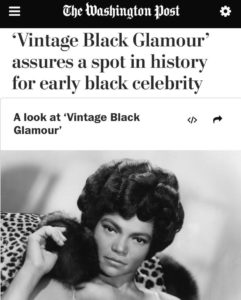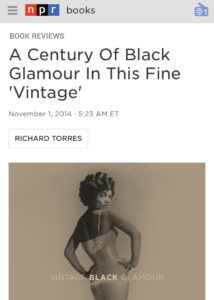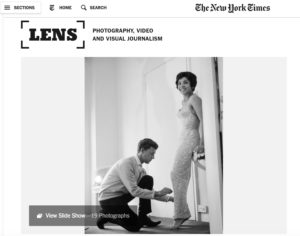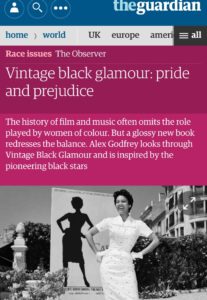Nichelle discusses her Vintage Black Glamour books and more with The National Arts Club for their NAC@Home series.



The photographs of these men, and the many others included in “Vintage Black Glamour,” served as alternative icons, replacing defamatory or mollifying character types with images that exemplified what it meant to be talented, hard-working, self-possessed and, to employ a word that has itself become a kind of stereotype, cool.
The New York Times
A new book by Nichelle Gainer brings to prominence the sartorial elegance of black men from the world of music, film and sport. Each photograph is accompanied by a profile of these men who epitomised black glamour.
The Guardian
Gainer’s collection of images isn’t your grade-school Black History Month bulletin board. “Vintage Black Glamour” reminds you that these people had friends and confidants and lovers and charming idiosyncrasies, and that’s what Gainer wants you to see: humanity.
The Washington Post



Vintage Black Glamour uses elegance as a tool for social commentary: By focusing the personal and professional accomplishments of her subjects, and providing plenty of context, Gainer has turned what could have easily been a bourgeois manifesto into a meaningful project.
NPR Books
The book demonstrates the complex ways celebrities construct themselves for the camera and, ultimately, for the public they want to attract. It resonates with stunning images, highlighting sumptuous clothes, meticulous makeup and hair, and seductive poses that establish these women as entertainment, business and fashion icons.
But it is the stories behind these photographs — provided by Ms. Gainer in concise biographies and sharp observations — that remind us of the urgency of this self-construction for these women.
The New York Times
Vintage Black Glamour, a hefty, handsome new coffee-table book, is full of such stories, with photographs of those shunned by the spotlight, as well as idiosyncratic, unseen shots of those who weren’t. It begins with an 1891 picture of French horsewoman Selika Lazevski, and ends in 1981 with Sister Sledge. There’s musician Valaida Snow in 1930s London, conducting a white orchestra in thrall to her; Dandridge in the 1950s, striking a pose while her Russian instructor positions her foot; Aretha Franklin backstage in Newark in 1969, eyeliner in one hand, fag in the other.
The Guardian